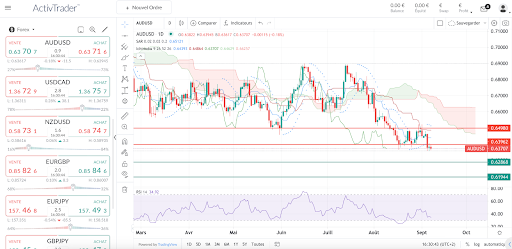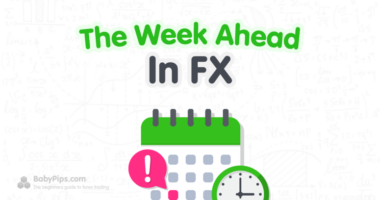The Reserve Bank of Australia has maintained the official cash rate at 4.1% for the third consecutive month on September the 5th. However, it has indicated that there is a possibility of future rate hikes in order to effectively manage inflation.
The cash rate remains at its highest level in over a decade, and the latest decision marks the fourth instance in which the RBA has halted its ongoing tightening cycle of rate increases since it all began in May 2022.
The most recent board meeting also marked the end of RBA governor Philip Lowe’s tenure, spanning seven years, with his term officially concluding in the next week. Michele Bullock, the previous deputy governor of the RBA, is scheduled to assume her new position on September the 18th.
After inflation cooled to 4.9% in July, lower than anticipated but over the central bank’s goal range of 2% to 3%, the RBA decided to keep rates on hold for another month, which was in line with forecasts of the majority of analysts and financial markets.
In his last remarks as the Governor, Mr. Lowe suggested that despite the downward trajectory of inflation, the need for further interest rate hikes could still be necessary in the near future.
Will the incoming governor and new policies stemming from the recent review of the central bank have a deviating impact on the direction of interest rates? What will the impact on the AUD? Let’s take a look.
First female RBA Governor: Michelle Bullock
Michelle Bullock’s most recent background is as Deputy Governor of the RBA, a position she was appointed to in April 2022, and served for more than a year before her promotion to the top position by the Albanese government.
Having originally joined the central bank in 1985, Bullock has held a variety of posts in the economic and foreign divisions of the RBA, so she has a vast range of experience.
Her appointment was driven by a desire to repair the bank’s reputation with the public and reorganize its internal structures in the wake of the pandemic without necessarily changing the monetary policy stance of the bank.
The appointment of Bullock to replace Lowe as Governor has been widely applauded, despite concerns that, having been with the bank for over 30 years, she may not be the most suitable person to implement the sweeping new reforms recommended by the bank’s recent review.
Major changes ahead at the RBA
Among the proposed changes to come, beginning in 2024, the RBA will reduce the number of times every year it meets to set the direction of monetary policy from 11 meetings to 8.
Some believe this might result in heftier spikes in the cash rate given that there are fewer opportunities to modify it. A point that Bullock has made references to in the past.
When Bullock takes the reins, she will oversee a slightly more autonomous institution where the governor has slightly less authority. Currently, the governor alone approves decisions relating to monetary policy, and the identities of those who voted for or against it are not disclosed. As part of the review that Australia’s Treasurer, Jim Chalmers, approved in April, among more than 50 other recommendations, this will be set to change.
The reorganization will also eliminate the governor’s ability to reverse interest rate decisions, and it will create two boards, one led by an independent chair to manage the bank, and the other led by the governor to set interest rates. The board that sets monetary policy will comprise a greater number of experts in economics and the financial system than at present.
It’s hard to imagine that having worked with the RBA for such a long time, the direction of the bank’s monetary policy is likely to change under the incoming administration, or that Bullock’s appointment will result in any significant policy shifts. The main hope is that the new governor will be able to supervise the improvements recommended by the review and that the changes will have the desired impact.
Will the AUD bounce back in the coming month?
The AUD/USD currency pair is currently trading at approximately 0.6377 at the time of writing, which is close to its lowest level since November 2022.
This decline in the exchange rate can be attributed to the recent strengthening of the US dollar, following a period of correction.
Over the past few months, from mid-July onwards, the currency pair has experienced a significant decrease of more than 7.40%.
Given this substantial decline, and the bullish signs of the ActivTrader’s market sentiment indicator, there is a growing sentiment among some analysts that the AUD/USD pair might be in the process of bottoming, especially if the RBA starts increasing its interest rates again, while the Fed slows down.
While this implies that the currency pair may have reached a level where further declines in the short term are less probable, it’s important to acknowledge that market dynamics can swiftly shift.
Additionally, several significant upcoming macroeconomic events could offer investors insights into the next potential move for the currency pair.
If the currency pair experiences an upward movement, traders will closely monitor the resistance levels at 0.63962 and 0.64980. Conversely, if the AUD/USD pair continues its fall, the support levels at 0.62868 and 0.61944 will be important to watch.
The information provided does not constitute investment research. The material has not been prepared in accordance with the legal requirements designed to promote the independence of investment research and as such is to be considered to be a marketing communication.
All information has been prepared by ActivTrades (“AT”). The information does not contain a record of AT’s prices, or an offer of or solicitation for a transaction in any financial instrument. No representation or warranty is given as to the accuracy or completeness of this information.
Any material provided does not have regard to the specific investment objective and financial situation of any person who may receive it. Past performance is not a reliable indicator of future performance. AT provides an execution-only service. Consequently, any person acting on the information provided does so at their own risk.









